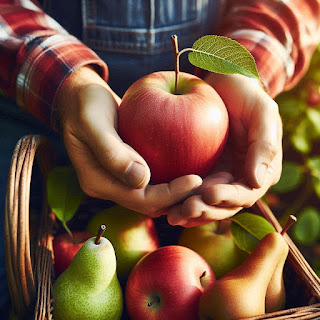Caring for Apples and Pears for Bountiful Harvests
Growing apples and pears can be a rewarding endeavor, yielding not only delicious fruit but also enhancing the beauty of your garden. Proper care and maintenance are crucial to ensure healthy trees and bountiful harvests. In this comprehensive guide, we will delve into the essential practices that will help you cultivate thriving apple and pear trees.
Choosing the Right Varieties
When starting your journey into apple and pear cultivation, the first step is selecting the right varieties. Different types of apples and pears flourish in various climates and soil conditions.
- Apple Varieties: Some popular varieties include Fuji, Gala, Honeycrisp, and Granny Smith. Choose a variety that suits your taste preferences and local growing conditions.
- Pear Varieties: Consider varieties like Bartlett, Bosc, and Anjou for their unique flavors and textures.
Researching local nurseries or agricultural extensions can provide insights into which varieties perform best in your area.
Site Selection and Soil Preparation
The location of your trees significantly influences their growth.
Choosing the Right Location
- Sunlight: Ensure your trees receive full sun, which means at least 6-8 hours of direct sunlight each day.
- Wind Protection: Locate your trees in an area shielded from harsh winds, as strong gusts can damage blossoms and fruit.
Soil Quality
- Soil Type: Apples and pears prefer well-drained, sandy loam soils rich in organic matter. Conduct a soil test to determine pH and nutrient levels.
- Amending Soil: Incorporate compost or well-rotted manure to improve soil structure and fertility. Aim for a pH between 6.0 and 7.0 for optimal growth.
Planting Techniques
The planting process is crucial for the long-term health of your trees.
Best Time to Plant
- Spring or Fall: The best time to plant apple and pear trees is during the dormant season—early spring or late fall.
Planting Steps
- Dig a Hole: Create a hole twice as wide as the root ball and just as deep.
- Prepare the Tree: Remove the tree from its container and gently loosen any tightly bound roots.
- Position the Tree: Place the tree in the center of the hole, ensuring that the graft union (the swollen area where the tree was grafted) is level with the soil surface.
- Backfill: Fill the hole with soil, ensuring there are no air pockets. Water thoroughly after planting.
Watering Requirements
Establishing Young Trees
During the first year, it’s vital to keep the soil consistently moist to help establish strong root systems.
- Frequency: Water deeply once a week during dry spells.
Mature Trees
Once established, mature trees require less frequent watering. Monitor soil moisture and water during extended dry periods.
Fertilizing for Optimal Growth
Proper fertilization promotes healthy foliage and fruit production.
Initial Fertilization
- Organic Fertilizers: Use organic fertilizers such as compost or well-balanced fertilizers like a 10-10-10 NPK mix in early spring.
Annual Fertilization Schedule
- Spring Application: Apply a balanced fertilizer each spring as the trees begin to leaf out. Follow package instructions for application rates.
Pruning Techniques
Pruning is essential for maintaining tree health, improving air circulation, and encouraging fruit production.
When to Prune
- Dormant Season: Late winter or early spring, before new growth begins, is the ideal time to prune.
Pruning Steps
- Remove Dead or Diseased Wood: Cut back any branches that appear dead or diseased.
- Shape the Tree: Aim for an open-center shape to improve light penetration and airflow.
- Thinning: Thin out crowded branches to reduce competition for nutrients.
Pest and Disease Management
Maintaining the health of your apple and pear trees involves monitoring for pests and diseases.
Common Pests
- Aphids: These small insects can cause leaf curling. Use insecticidal soap for control.
- Codling Moths: They lay eggs in developing fruits. Utilize traps and organic pesticides for management.
Diseases to Watch For
- Powdery Mildew: This fungal disease appears as a white powdery substance on leaves. Treatment involves fungicides and good air circulation.
- Fire Blight: This bacterial disease can devastate pear trees. Prune affected areas immediately and apply a copper fungicide as a preventive measure.
Harvesting Techniques
Knowing when and how to harvest your apples and pears is vital for maximizing flavor and quality.
When to Harvest
- Apples: Most varieties are ready for harvest in late summer to early fall. A good indicator is when the fruit easily detaches from the tree.
- Pears: Pears are best harvested while still firm and allowed to ripen off the tree.
Harvesting Method
- Gentle Handling: Use gentle pressure to avoid bruising. Place harvested fruit in a padded container to protect them during transport.
Conclusion
Caring for apples and pears requires dedication and knowledge. By selecting the right varieties, preparing the soil, implementing proper watering and fertilization techniques, and managing pests and diseases, we can ensure healthy trees that yield bountiful harvests.



Comments
Post a Comment